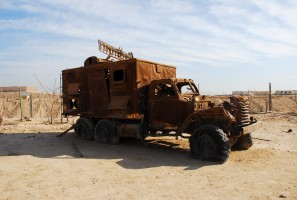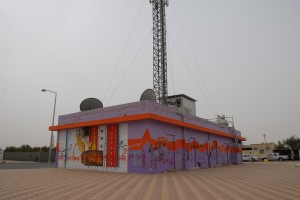?That?s when American colleges and universities will really
start to feel the pain. Political pressure will continue to grow for credits
earned in low-cost MOOCs to be transferable to traditional colleges, cutting
into the profit margins that colleges have traditionally enjoyed in providing
large, lecture-based college courses. At the same time, people with huge
student loan burdens from overpriced institutions will be undercut in the labor
market by foreign-born workers willing to work for less because they incurred
no debt in getting valuable credentials in the parallel higher education
universe.? - Kevin Carey
 Washington Monthly again has a must-read article on the
impact of online learning on higher education. Oregon?s
higher ed policy leaders, and all Oregon taxpayers,
should read the article and question making further investments in Oregon?s very
traditional public higher ed system. The article by Kevin Carey is titled ?The
Seige of Academe: For years, Silicon Valley
has failed to breach the walls of higher education with disruptive technology.
But the tide of battle is changing. A report from the front lines? (here):
Washington Monthly again has a must-read article on the
impact of online learning on higher education. Oregon?s
higher ed policy leaders, and all Oregon taxpayers,
should read the article and question making further investments in Oregon?s very
traditional public higher ed system. The article by Kevin Carey is titled ?The
Seige of Academe: For years, Silicon Valley
has failed to breach the walls of higher education with disruptive technology.
But the tide of battle is changing. A report from the front lines? (here):
?.So the VC guys and the start-ups look at K-12 and higher education, which
between them cost over $1 trillion per year in America, and much more around the
world. They see?businesses that are organized around communication between
people and the exchange of information, two things that are increasingly
happening over the Internet. Right now, nearly all of that communication and
exchange happens on physical platforms?schools and colleges?that were built a
long time ago. A huge amount of money is tied up in labor and business
arrangements that depend on things staying that way. How likely are they to
stay that way, in the long term? Sure, there are a ton of regulatory
protections and political complications tied up in the fact that most education
is funded by the taxpayer. As always, the timing would be difficult, and there
is as much risk in being too early as too late.
Still, $1 trillion, just sitting there. And how much does it cost
for a firm like Learn Capital to invest in a few people sitting around a table
with their MacBook Airs? That?s a cheap lottery ticket with a huge potential
jackpot waiting for whomever backs the winning education platform?..
And:
Perhaps the biggest sign that this assault on the
university is of an unprecedented scale is that some of the biggest incumbents
have finally started making moves to defend themselves. In Palo Alto one evening, Michael and I walk to
a bar and meet a woman who is helping Stanford build out its online higher
education infrastructure. For the previous five months, Stanford had been on
one end of a fascinating game of higher education technology one-upsmanship.
Throughout the fall 2011 semester, a group of well-known Stanford professors
had been running an unorthodox experiment by letting over 100,000 students
around the world take their courses, online, for free. Those who did well got a
certificate from the professor saying so. Then, in December, MIT announced the
creation of MITx, a new nonprofit organization, branded by the university,
which would also offer so-called ?massively open online courses,? or MOOCs, and
would also give certificates to those who earned them?a new kind of academic currency.
In January, some of the Stanford professors broke off from the university
and formed a new for-profit company called Udacity, designed to offer the same
MOOCs, sans Stanford. In March, some of the other Stanford professors formed
another company, Coursera, to offer courses from Princeton, Stanford, Michigan,
and Penn, also online, also for free. In May, a few weeks after I returned from
the trip, Harvard got into the game by joining the MIT side and founding a
larger initiative called edX. Harvard had displayed virtually no interest in
online education up to that point. The edX move smacked of an industry leader
finding itself in the unfamiliar position of being left behind. In July, the University of Virginia,
fresh off its technology-panic leadership crisis, jumped on the Coursera
bandwagon along with Duke, Cal Tech, Johns
 Hopkins, Rice, the University of Edinburgh,
and a half-dozen other well-known universities. A week later, UC-Berkeley
joined edX. In less than a year, online higher education has gone from the
province of downmarket for-profit colleges to being embraced by the most famous
universities in the world.
Hopkins, Rice, the University of Edinburgh,
and a half-dozen other well-known universities. A week later, UC-Berkeley
joined edX. In less than a year, online higher education has gone from the
province of downmarket for-profit colleges to being embraced by the most famous
universities in the world.
And:
As the platform wars commence and huge online courses grow in prominence,
most of the first adopters won?t be American students forgoing the opportunity
to drink beer on weekends at State
U. Instead, they?ll be
students like Bali, among the hundreds of
millions of people around the world with the talent and desire to learn but no
State U to attend. The initial MOOC statistics bear this out?according to
Udacity?s founder, Sebastian Thrun, more people from Lithuania signed up for
his Stanford class than attend Stanford itself.
Instead of trying to directly challenge American colleges?a daunting
proposition, given the political power and public subsidies they possess?the
new breed of tech start-ups will likely start by working in the unregulated
private sector, where they?ll build what amounts to a parallel higher education
universe. A few weeks after returning from the West Coast, I watched
 Eren Bali
spend two hours in a Washington, D.C.-area conference room listening to
government officials, regulators, and representatives of for-profit higher
education corporations discuss the morass of accreditation rules and federal
regulations that make it hard for entrepreneurs to compete directly with
traditional schools. Finally, Bali raised his
hand and politely said, in effect, I don?t understand why any of this matters.
I can go online right now and get everything I need to learn?courses, textbooks,
videos, other students to study with?for free. And if I need to know what
someone else has learned, I can look at their Linked-In profile or their blog
to find out.
Eren Bali
spend two hours in a Washington, D.C.-area conference room listening to
government officials, regulators, and representatives of for-profit higher
education corporations discuss the morass of accreditation rules and federal
regulations that make it hard for entrepreneurs to compete directly with
traditional schools. Finally, Bali raised his
hand and politely said, in effect, I don?t understand why any of this matters.
I can go online right now and get everything I need to learn?courses, textbooks,
videos, other students to study with?for free. And if I need to know what
someone else has learned, I can look at their Linked-In profile or their blog
to find out.
At a certain point, probably before this decade is out, that parallel universe
will reach a point of sophistication and credibility where the degrees?or
whatever new word is invented to mean ?evidence of your skills and
knowledge??it grants are taken seriously by employers. The online learning
environments will be good enough, and access to broadband Internet wide enough,
that you won?t need to be a math prodigy like Eren Bali to learn, get a
credential, and attract the attention of global employers. Companies like
OpenStudy, Kno, Quizlet, Chegg, Inigral, and Degreed will provide all manner of
supportive services?study groups, e-books, flash cards, course notes,
college-focused social networking, and many other fabulous, as-yet-un-invented
things. Bali isn?t just the model of the new
ed tech entrepreneur?he?s the new global student, too, finally able to
transcend the happenstance of where he was born.
That?s when American colleges and universities will really start to feel the
pain. Political pressure will continue to grow for credits earned in low-cost
MOOCs to be transferable to traditional colleges, cutting into the profit
margins that colleges have traditionally enjoyed in providing large,
lecture-based college courses. At the same time, people with huge student loan
burdens from overpriced institutions will be undercut in the labor market by
foreign-born workers willing to work for less because they incurred no debt in
getting valuable credentials in the parallel higher education universe.
Colleges with strong brand names and other sources of revenue (e.g.,
government-sponsored research or acculturating the children of the ruling
class) will emerge stronger than ever. Everyone else will scramble to survive
as vestigial players.
 Blogger Matthew Yglesias, commenting on Carey?s
article, writes (here):
Blogger Matthew Yglesias, commenting on Carey?s
article, writes (here):
The problem then isn't how do traditional colleges offer a higher quality
product than what you could get in a MOOC. There are still all those smaller,
more intimate classes out there. The problem becomes how do you pay for that
stuff when the high-margin low-quality stuff gets competed away? Right now, the
high-quality teaching being done at colleges is benefitting from a large
implicit subsidy from the low-quality teaching being done at colleges and it's
not clear that bundle can survive.
Source: http://daveporter.typepad.com/global_strategies/2012/08/silicon-valleys-attack-on-higher-ed-an-update.html
triple play virginia tech shooting james neal jackie robinson virginia tech emancipation proclamation april 16




